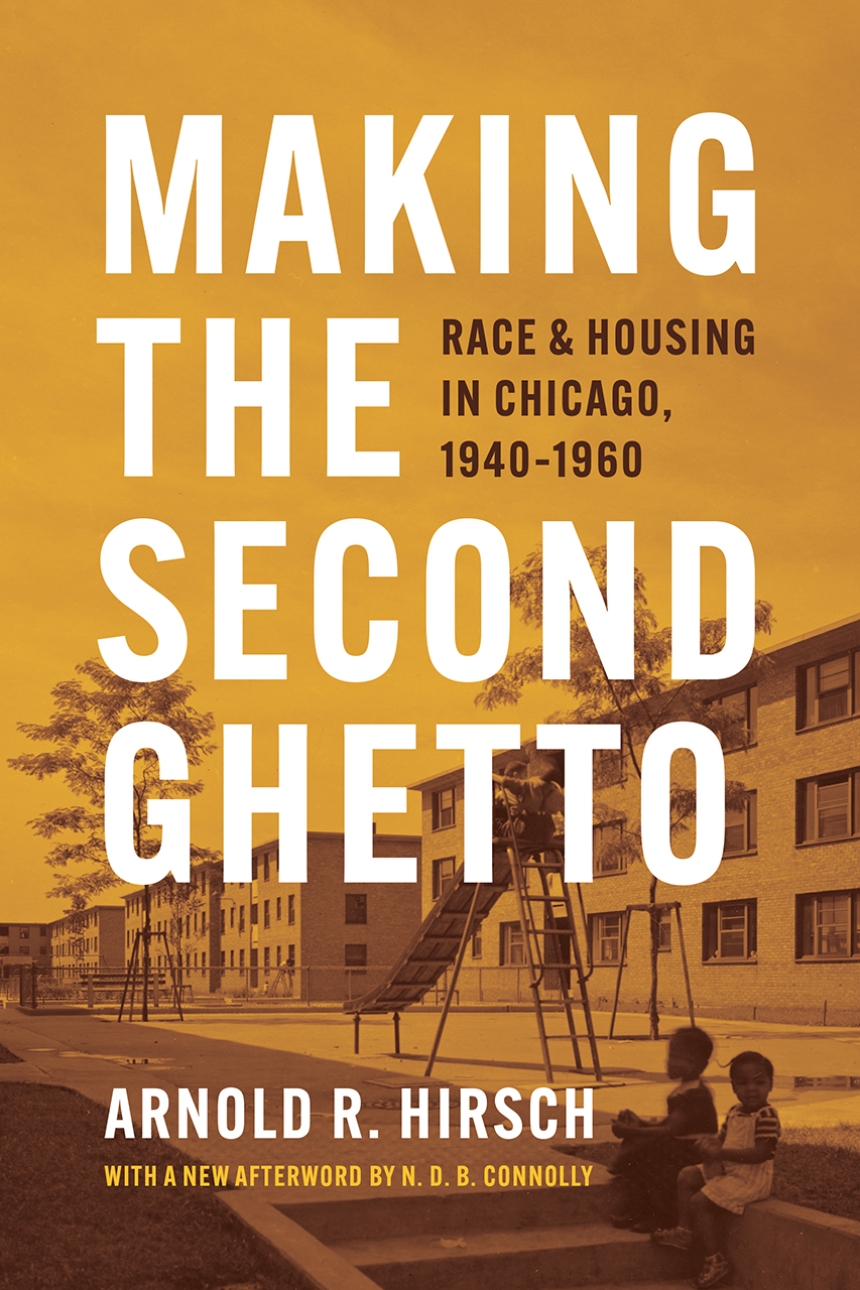Making the Second Ghetto
Race and Housing in Chicago, 1940-1960
Enlarged
9780226728513
9780226728650
Making the Second Ghetto
Race and Housing in Chicago, 1940-1960
Enlarged
First published in 1983 and praised by the likes of Ta-Nehisi Coates and Thomas Sugrue, Arnold R. Hirsch’s Making the Second Ghetto is the rare book that has only become more piercingly prescient over the years.
Hirsch’s classic and groundbreaking work of urban history is a revelatory look at Chicago in the decades after the Great Depression, a period when the city dealt with its rapidly growing Black population not by working to abolish its stark segregation but by expanding and solidifying it. Even as the civil rights movement rose to prominence, Chicago exploited a variety of methods of segregation—including riots, redevelopment, and a host of new legal frameworks—that provided a national playbook for the emergence of a new kind of entrenched inequality. Hirsch’s chronicle of the strategies employed by ethnic, political, and business interests in reaction to the Great Migration of Southern Blacks in the mid-twentieth century makes startingly clear how the violent reactions of an emergent white population found common ground with policy makers to segregate first a city and then the nation.
This enlarged edition of Making the Second Ghetto features a visionary afterword by historian N. D. B. Connolly, explaining why Hirsch’s book still crackles with “blistering relevance” for contemporary readers.
Hirsch’s classic and groundbreaking work of urban history is a revelatory look at Chicago in the decades after the Great Depression, a period when the city dealt with its rapidly growing Black population not by working to abolish its stark segregation but by expanding and solidifying it. Even as the civil rights movement rose to prominence, Chicago exploited a variety of methods of segregation—including riots, redevelopment, and a host of new legal frameworks—that provided a national playbook for the emergence of a new kind of entrenched inequality. Hirsch’s chronicle of the strategies employed by ethnic, political, and business interests in reaction to the Great Migration of Southern Blacks in the mid-twentieth century makes startingly clear how the violent reactions of an emergent white population found common ground with policy makers to segregate first a city and then the nation.
This enlarged edition of Making the Second Ghetto features a visionary afterword by historian N. D. B. Connolly, explaining why Hirsch’s book still crackles with “blistering relevance” for contemporary readers.
400 pages | 25 halftones | 6 x 9 | © 2021
Historical Studies of Urban America
History: American History, Urban History
Sociology: Urban and Rural Sociology
Reviews
Table of Contents
List of tables and maps
Foreword
Preface
1 The second ghetto and the dynamics of neighborhood change
2 An era of hidden violence
3 Friends, neighbors, and rioters
4 The Loop versus the slums: downtown strikes back
5 A neighborhood on a hill: Hyde Park and the University of Chicago
6 Divided we stand: white unity and the color line at midcentury
7 Making the second ghetto
Epilogue: Chicago and the nation
Afterword to the 2021 edition
Notes
Index
Foreword
Preface
1 The second ghetto and the dynamics of neighborhood change
2 An era of hidden violence
3 Friends, neighbors, and rioters
4 The Loop versus the slums: downtown strikes back
5 A neighborhood on a hill: Hyde Park and the University of Chicago
6 Divided we stand: white unity and the color line at midcentury
7 Making the second ghetto
Epilogue: Chicago and the nation
Afterword to the 2021 edition
Notes
Index
